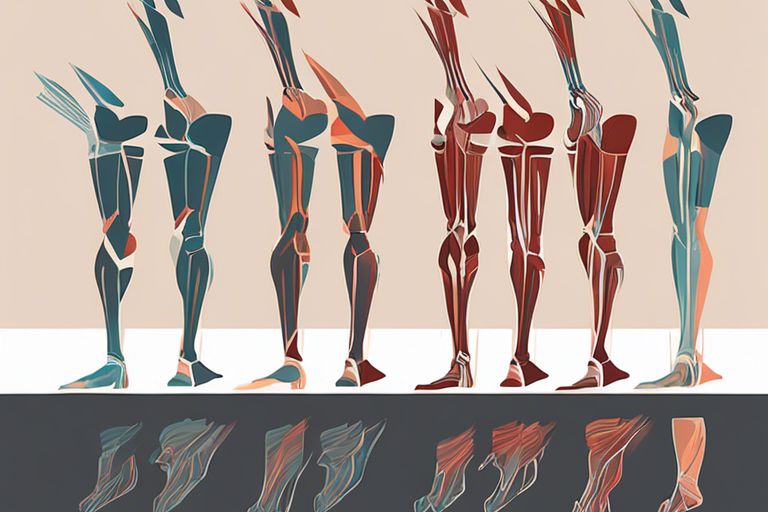As you begin your fitness journey, you may be wondering just how much impact walking can have on your calorie burn. Walking is one of the most accessible forms of exercise, and its benefits go beyond just cardiovascular health. Walking can help you maintain a healthy weight, reduce the risk of chronic diseases, and improve your overall mood. On the other hand, it is important to know that not all walking is created equal when it comes to calorie burn. Factors like speed, incline, and duration all play a role in how many calories you can expect to burn during your walk. In this blog post, we will break down the science behind calorie burn while walking and give you practical tips to maximize your workout.
The Basics of Burning Calories
Your body is constantly burning calories, even when you’re not engaging in physical activity. Calories are a unit of measurement for the amount of energy in the food and drinks you consume. When you’re walking, you are increasing your daily caloric expenditure, which can contribute to weight management and overall health.
What Are Calories?
Calories are a unit of measurement used to quantify the amount of energy that is provided by the food and drinks you consume. When you eat and drink, you are consuming calories, which your body burns to provide energy for activities such as walking, breathing, and even sleeping. Walking is a form of physical activity that can enhance your body’s calorie-burning process, leading to better overall health and fitness.
Factors That Affect Caloric Burn
Several factors can affect the number of calories burned while walking. Your body weight, walking speed, and the terrain you’re walking on can all impact your caloric expenditure. Additionally, external factors such as weather conditions and the incline of the walking surface can play a role in how many calories you burn. Your fitness level and the intensity of your walk also influence the amount of calories you burn. Perceiving and understanding these factors can help you optimize your walking routine to achieve the most effective calorie burn.
Walking and Caloric Expenditure
Assuming you want to incorporate more physical activity into your daily routine, walking can be a great way to burn calories and improve your overall fitness. But just how many calories can you expect to burn while walking?
Average Calories Burned by Walking
On average, walking can help you burn around 100 calories per mile. This estimate is based on a moderate walking pace of 3-4 miles per hour. The exact number of calories burned will depend on factors such as your body weight, walking speed, and the terrain you are walking on. In general, the more you weigh, the more calories you’ll burn while walking.
Walking Speed and Calorie Burn
Your walking speed can also impact the number of calories you burn. Walking at a faster pace or adding inclines to your walking route can help you burn more calories. For example, walking at a brisk pace of 4-5 miles per hour can help you burn significantly more calories than strolling at a leisurely 2 miles per hour. However, it’s important to note that faster walking may also increase the risk of injury, so it’s essential to listen to your body and avoid pushing yourself too hard.
Maximizing Your Walks
Now that you understand the benefits of walking and how many calories you can burn while doing so, it’s time to focus on maximizing your walks. Whether you’re aiming to lose weight, improve your overall fitness, or simply enjoy the outdoors, there are ways to make the most of your walking routine.
Techniques to Increase Caloric Burn While Walking
One effective way to increase the number of calories burned during your walks is to incorporate interval training. This involves alternating between periods of fast-paced walking and slower, more moderate walking. This technique can help boost your heart rate and increase your overall calorie burn. Another effective technique is to incorporate hills or inclines into your walking route. Walking uphill requires more effort and can intensify your workout, leading to a higher calorie expenditure.
Incorporating Walking into Your Daily Routine
To maximize your calorie burn from walking, consider incorporating it into your daily routine. Instead of driving short distances, consider walking if it’s feasible. You can also take the stairs instead of the elevator or escalator, and make an effort to walk during your lunch break or after dinner. If you’re able to walk to work, this can also be a great way to add more physical activity into your day.
Monitoring Your Progress
Despite the initial excitement of starting a new exercise routine, it can be easy to lose motivation over time. To prevent this, it’s important to monitor your progress and celebrate your achievements along the way. This not only helps you stay motivated, but also allows you to make adjustments to your walking routine if needed.
Tracking Caloric Burn and Walking Activity
One of the most effective ways to monitor your progress is by tracking your caloric burn and walking activity. There are several fitness apps and wearable devices that can help you keep track of the number of calories you burn during each walk, as well as the distance and duration of your walks. By keeping a record of your walking activity, you can see how your fitness levels are improving over time and make adjustments to your routine to maximize your results.
Setting Realistic Goals for Weight Loss and Fitness
Setting realistic goals for weight loss and fitness is essential for monitoring your progress. When it comes to walking, it’s important to set achievable goals that align with your current fitness level. For example, aiming to increase your daily step count by 500 steps per week or walking for an additional 10 minutes each day can help you gradually improve your fitness and burn more calories. By setting realistic goals, you can track your progress more effectively and avoid feeling discouraged if you don’t see immediate results.
Remember to celebrate every milestone, no matter how small it may seem. Monitoring your progress can help you stay on track and continue making strides towards your fitness and weight loss goals. Keep track of your caloric burn and walking activity to see how your fitness levels are improving over time, and make adjustments to your routine as needed. Be sure to set realistic and achievable goals to keep yourself motivated and avoid feeling discouraged. With the right approach, you can monitor your progress and make the most of your walking routine to achieve your desired results.
Conclusion: How many calories can you burn while walking?
Drawing together what you’ve learned about the factors that affect calorie burn while walking, it’s clear that the intensity, duration, and your individual body composition all play a role in determining how many calories you can burn. By understanding these factors, you can make informed decisions about your walking routine to maximize calorie burn and achieve your fitness goals. Remember, consistency and dedication to your walking routine will ultimately lead to the most significant calorie burn and overall health benefits.




